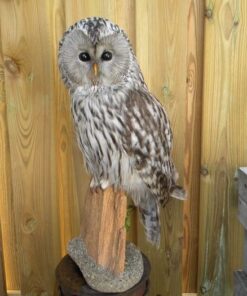American Black Bear
$5,250.00 Original price was: $5,250.00.$4,999.00Current price is: $4,999.00.
American Black Bear
The American black bear (Ursus aAmerican Black Bearmericanus), a symbol of North American wilderness, versatility, and adaptability, roams diverse habitats across the continent, from dense forests to mountainous terrains. As the most widely distributed bear species in North America, the American black bear’s characteristics, behaviors, and interactions with its environment make it a captivating and iconic presence in the natural landscapes it inhabits.
The American black bear is a medium-sized bear species, with adult males weighing between 200 to 600 pounds, and females typically smaller. Despite its name, the coat of the American black bear can vary in color from black to various shades of brown, cinnamon, or even blond. This variation in coat color is influenced by factors such as genetics, age, and diet. Some bears may have a white chest patch, a distinctive feature that adds to their individuality.
These bears exhibit a wide range of habitats, displaying remarkable adaptability. From dense forests and swamps to mountainous regions and grasslands, American black bears thrive in diverse ecosystems. Their diet is equally adaptable, consisting of a mix of vegetation, fruits, nuts, insects, and occasionally small mammals or carrion. This dietary flexibility allows them to take advantage of seasonal food availability and adjust to changes in their environment.
Buy American Black Bear Online
One of the distinctive behaviors of American black bears is their ability to enter a state of torpor or dormancy during winter, known as hibernation. Unlike some other bear species, American black bears are not true hibernators. Instead, they enter a lighter form of torpor, during which their metabolic rate decreases, and they experience a state of reduced activity. Hibernation allows bears to conserve energy during periods of scarce food and harsh weather conditions.
Despite their adaptability and general avoidance of confrontations, encounters between humans and black bears can occur. The majority of these encounters are non-threatening, as black bears often exhibit avoidance behavior. However, proper education on bear behavior, responsible waste management, and adherence to bear safety guidelines are crucial for minimizing potential conflicts and ensuring the well-being of both humans and bears.
In conclusion, the mount is a remarkable and versatile species that embodies the resilience and adaptability required to thrive in diverse North American landscapes. From the dense forests of the Appalachians to the alpine meadows of the Rockies, black bears play a vital role in ecosystem dynamics and contribute to the rich tapestry of North American biodiversity. As we continue to coexist with these iconic bears, conservation efforts and responsible management practices are essential to safeguard their habitats and ensure the continued survival of this symbol of the wild.
Be the first to review “American Black Bear” Cancel reply
Related products
Full Body Mounts
Full Body Mounts
Full Body Mounts
Full Body Mounts













Reviews
There are no reviews yet.